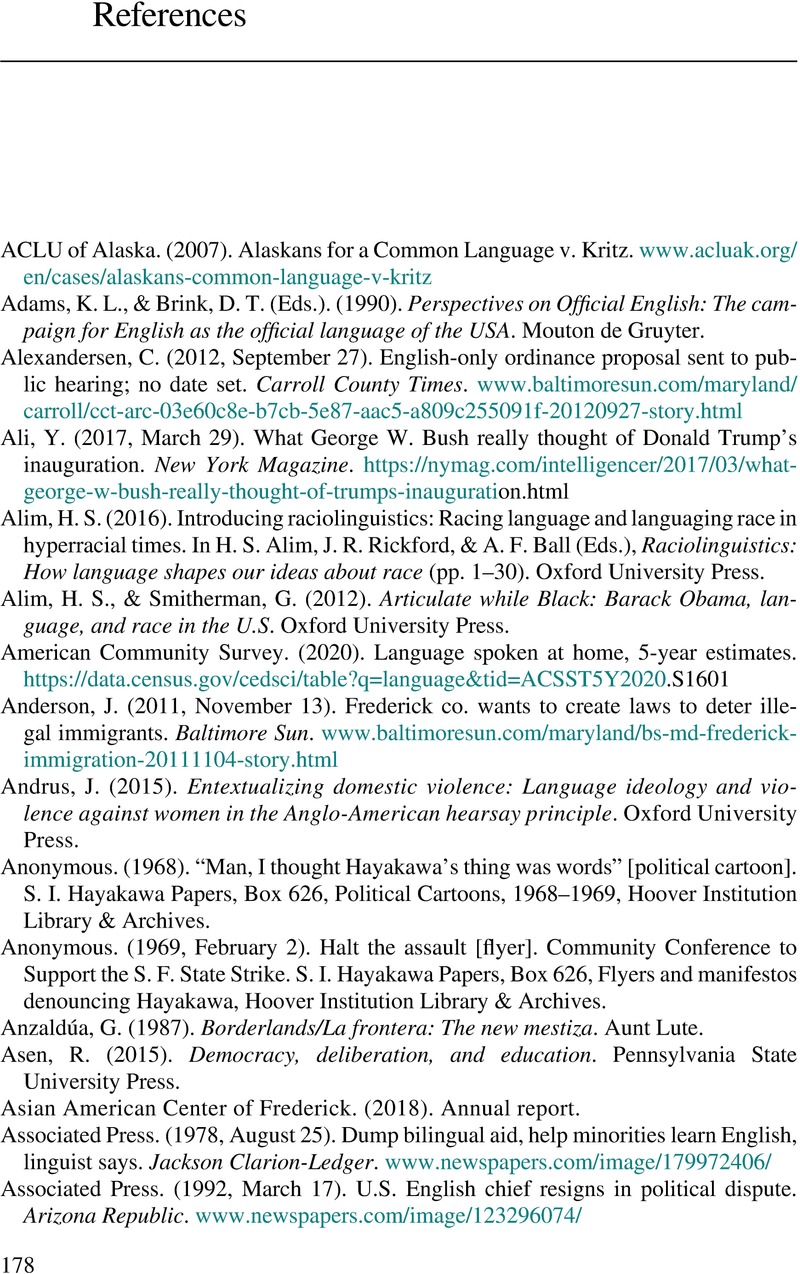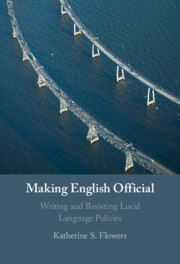Book contents
- Making English Official
- Making English Official
- Copyright page
- Dedication
- Contents
- Figures
- Tables
- Acknowledgments
- Introduction
- 1 The Origins of the English-Only Movement
- 2 Creating English-Only Policies
- 3 Emphasizing the Local in Language Policy
- 4 Resisting and Rewriting
- Conclusion
- Book part
- References
- Index
- References
References
Published online by Cambridge University Press: 04 January 2024
- Making English Official
- Making English Official
- Copyright page
- Dedication
- Contents
- Figures
- Tables
- Acknowledgments
- Introduction
- 1 The Origins of the English-Only Movement
- 2 Creating English-Only Policies
- 3 Emphasizing the Local in Language Policy
- 4 Resisting and Rewriting
- Conclusion
- Book part
- References
- Index
- References
Summary

- Type
- Chapter
- Information
- Making English OfficialWriting and Resisting Local Language Policies, pp. 178 - 205Publisher: Cambridge University PressPrint publication year: 2024



